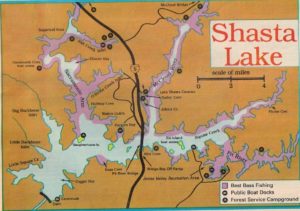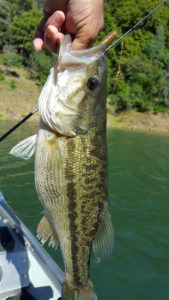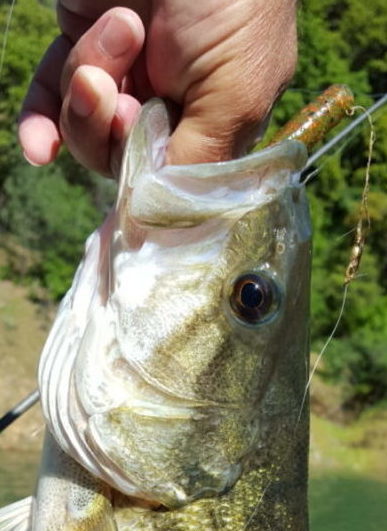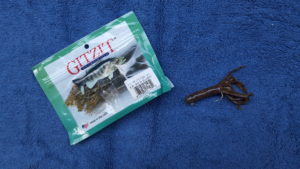 I am going to attempt bringing you up to speed about how I have been applying new winter cold water tech, (for me), on the spotted bass of Lake Shasta since this winter/spring past.
I am going to attempt bringing you up to speed about how I have been applying new winter cold water tech, (for me), on the spotted bass of Lake Shasta since this winter/spring past.
This enormous lake was pretty well drained after the years of drought California has experienced. Luckily, this year was pretty much normal for precipitation, and it started filling fast. The lake was still really low when my friend Don and I began fishing in early February.
We did manage to get in a few days between rain storms, but really didn’t have any huge bragging rights outings. The few fish we boated were really nice specimens though. Lake Shasta isn’t known for producing really big spotted bass. A fifteen, or sixteen inch two pounder is a nice fish here.

Now February here in Northern California is not usually real cold. After all this is California. The day time temperatures range in the 40’s and 50’s. Down right balmy compared with winter temperatures experienced in other parts of the world.
The lake water surface temperature was in the low 50’s and slipped into the high 40’s where my friend and I were fishing. When the water temperature is this chilly, the bass are very reluctant to move a great deal to grab a bite to eat. We needed to fish really, really slow.
Our tackle consisted of light spinning outfits, and we were presenting a soft bait called a tube around here. A popular tube by trade name is Gitzit, and are made by Gitzit Inc. in Utah USA http://gitzitinc.com
The tackle shop I frequent has success reports and a huge variety of these tubes, but they are made by another manufacturer, and work really well. The tube I had the most success with is a soft plastic bait called a Mudpie.
To use these tubes for the fish we were targeting in the 25 to 40 feet deep bottom, a jig head needs to be inserted into the bait, and I found the 1/8th oz. tapered tube head with a number 4/0 hook worked the best for me. It takes a little longer to sink than a 1/4 or 3/16 oz. tapered tube head, but when working it along the really sharp rocks on the bottom of this lake, the lighter weight tends to move across the bottom with far less snag ups.
The less time spent tying on baits, the more opportunity for catching fish. Keeping your bait in the water is a key for catching wintering spotted bass on Lake Shasta.
To recap here, we spent the month of February working the cold water using soft baits real slow, and boated some nice spotted bass laying on the bottom at about 35 feet. Stay tuned, the month of March was a boomer for these spots, and we began using new tech resulting in fantastic success.
Mr Hook

